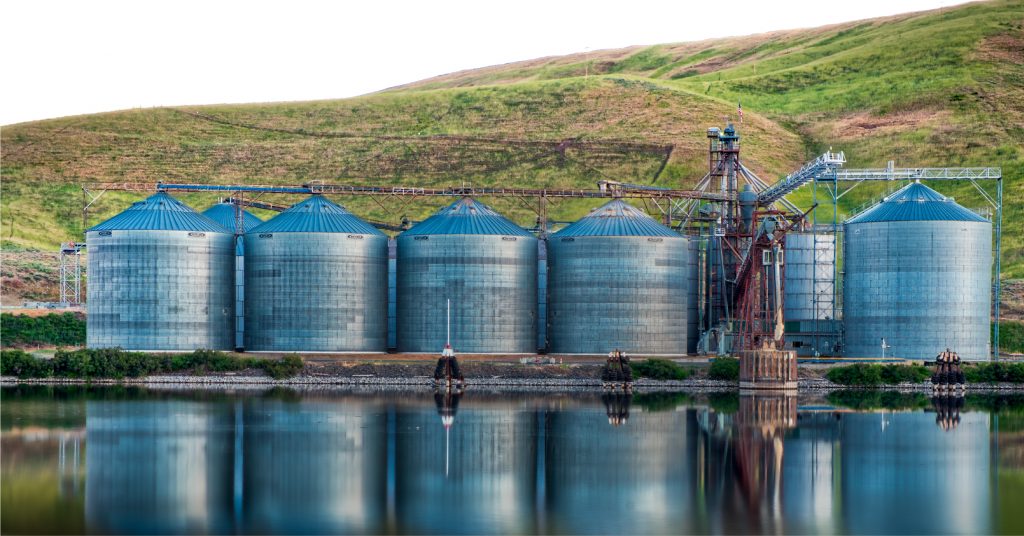Water quality is a critical concern in Oman due to its arid climate and limited freshwater resources. Industries, power plants, laboratories, and healthcare facilities often require high-purity water for their operations, which cannot be achieved through conventional treatment processes. This is where demineralized water comes into play.
In this blog, we will explore what demineralized water is, how it is produced, and address some common questions like “Is demineralized water the same as distilled water,” “What happens if you drink demineralized water,” and “What is the pH of demineralized water.”
What Is Demineralised Water?
Demineralized water, also known as deionized water, is water that has had almost all of its mineral ions removed, such as calcium, magnesium, sodium, chloride, sulfate, and nitrate. The removal of these ions ensures that the water is free from impurities that can interfere with industrial processes, laboratory experiments, or medical applications.
Unlike regular tap water, demineralized water does not contain salts or minerals, making it ideal for applications requiring extremely pure water. It is commonly used in industries like pharmaceuticals, electronics manufacturing, power generation, and chemical processing in Oman.
How Is Demineralised Water Produced?
The production of demineralized water involves processes that remove dissolved salts and minerals. The most common methods include:
- Ion Exchange
Ion exchange is the most widely used method for producing demineralized water. It uses cation and anion exchange resins to replace positively and negatively charged ions in the water with hydrogen (H⁺) and hydroxyl (OH⁻) ions. The combination of H⁺ and OH⁻ ions forms pure water. - Reverse Osmosis (RO)
Reverse osmosis is another effective method for producing demineralized water. It uses a semi-permeable membrane to filter out dissolved salts, minerals, and other impurities, leaving behind high-purity water. - Mixed Bed Deionisation
This advanced process combines cation and anion exchange resins in a single vessel to achieve high levels of purity. It is often used as a polishing step after reverse osmosis to ensure complete removal of ions. - Distillation (Optional)
While distillation is not technically the same as demineralization, it can produce water with similar purity levels. However, it is less energy-efficient compared to ion exchange or reverse osmosis.
The purified water is typically stored in demineralized water storage tanks made from non-corrosive materials like stainless steel or reinforced plastic to maintain its purity.
Is Demineralised Water the Same as Distilled Water?
A common question is whether demineralized water and distilled water are the same. While both are forms of purified water, they are produced using different methods and have distinct characteristics.
- Demineralized water is produced through ion exchange, reverse osmosis, or mixed bed deionization and removes nearly all mineral ions.
- Distilled water, on the other hand, is produced by boiling water and condensing the steam, which removes impurities and some minerals but may not be as thorough as demineralization.
Applications of Demineralised Water in Oman
In Oman, the demand for demineralized water spans multiple sectors:
- Power Generation
Demineralized water is used in boilers and cooling systems to prevent scale formation and corrosion, ensuring efficient power plant operations. - Pharmaceuticals
High-purity water is essential for the formulation of medicines and cleaning of equipment in pharmaceutical manufacturing. - Electronics Manufacturing
Demineralized water is used for cleaning electronic components to avoid residues that could interfere with the functionality of sensitive equipment. - Laboratories and Research
Many scientific experiments require demineralized water as it eliminates variables caused by impurities in tap water. - Automotive and Aerospace Industries
Demineralized water is used in battery production and cooling systems to enhance performance and longevity.
Pioneering Demineralised Water Solutions with Ion Exchange
The INDION New Generation Swift Softener is designed to remove scale-forming ions like calcium and magnesium from water effectively. Its standout feature is the shorter regeneration time, making it ideal for short-cycle operations. This lightweight and easy-to-install system boasts a quick 30-minute regeneration cycle. Assembled and tested at the factory, all units are ready for installation and commissioning within a day. With auto-operation and low maintenance, it ensures hassle-free usage. Key features include an automatic unit with a multiport valve that can withstand pressures up to 5.5 kg/cm2, a special grade of monosphere resin, low wastewater volume, and a short operating cycle of just 3 hours. It tolerates hardness up to 600 ppm and is constructed with durable fiber-reinforced plastic (FRP). Available in seven models, it offers flow rates ranging from 3.5 m3/h to 20 m3/h, catering to various requirements.
The INDION® Layered Bed Anion (LBA) unit is an innovative solution to maximize efficiency and minimize costs. This single-vessel system combines two types of resins, INDION LBA-WB and INDION LBA-SB, in a layered configuration with downflow service. This setup delivers the high chemical efficiency of a traditional two-bed system within one vessel, significantly reducing the need for additional equipment, piping, and valves. The result is excellent treated water quality and optimal use of regenerants, making the system both cost-effective and efficient. The INDION LBA system offers several advantages, including capital cost savings, a smaller footprint, high throughput capacity, and lower operating costs. Its contemporary design also ensures easy integration into existing systems, providing the lowest cost of production for demineralized water.
The INDION® Layered Bed Cation Unit is an innovative single-vessel system featuring layers of two resins. It combines INDION weak acid cation resin on top of INDION strong acid cation resin with a downflow service. This design delivers the high chemical efficiency of a two-bed weak acid cation and strong acid cation system within one vessel, eliminating the need for additional vessels, associated piping, and valves. The system enhances the chemical regeneration of the strong acid-cation resins, ensuring superior treated water quality and optimal regenerant utilization. Key advantages include capital cost savings, a lower footprint, and high efficiency in chemical usage due to its substantial throughput capacity.
The INDION Elegant system revolutionizes water treatment with its twin-bed deionized incorporating state-of-the-art counter-current flow ion exchange technology previously only available in large, custom-designed plants. Utilizing strong acid cation (SAC) and strong base anion (SBA) resins in columns, the system offers optional features like a degasser tower (DGT) and a layered bed anion (LBA) column to produce high-quality demineralized water at significantly lower capital and operating costs. The exceptionally compact, skid-mounted design on a corrosion-resistant frame includes stainless steel pumps and offers a standard range of 10–120 – 120 m³/h in either manual or PLC automatic control modes. It uses INDION uniform particle-size resins in a counter-current mode to produce water with a conductivity of 1–10 μS/cm and reactive silica of 10–30 ppb. Optional HMI provides system status read-outs, audible alarms, and no flow alarms. With a smaller footprint than conventional demineralized plants, INDION Elegant ensures minimal installation and commissioning time and cost.
The latest INDION Swift 5Gx series brings a family of automatic twin-bed deionisers, utilizing advanced counter-flow ion exchange technology, previously exclusive to large custom plants. With a regeneration time of just 35 minutes and a minimum service cycle of four hours, the need for standby plants and large water storage volumes is significantly reduced. This exceptionally compact series is skid-mounted on a corrosion-resistant frame, which includes a stainless steel multi-purpose pump. This pump not only optimizes plant performance during service and regeneration but also offers several recirculation options to maintain high water quality in the treated water tank. Key features of the INDION Swift 5Gx series include enhanced bacterial control, reduced treated water storage costs, near-neutral effluent, and high-quality treated water with conductivity between 1-10 µS/cm. Additionally, it boasts low operating costs, a quick start-up time, and a low footprint, making it an efficient and economical solution for high-quality water needs.
The latest Indion Swift Plus range features advanced automatic twin bed deionizers with state-of-the-art counter-flow ion exchange technology, previously found only in large, custom-designed plants. These rapid regeneration units are volume-controlled and pre-programmed in a PLC based on the type of feed water, allowing for a swift 35-minute regeneration after a minimum service cycle of two hours. This minimizes the need for a standby plant and reduces the storage of large water volumes. The Indion Swift Plus is exceptionally compact, skid-mounted on a corrosion-resistant frame, and includes a stainless steel multi-purpose pump. Key features include mixed-bed quality water at minimal cost, an additional cation polishing stage for enhanced quality, an average resistivity of purified water at 10 MΩ·cm with neutral pH, a small footprint, and high chemical efficiency. The Swift Plus delivers up to 330 m³/day on feed water of 100 ppm total anion feed, with no need for additional regenerant chemicals and a quick 35-minute regeneration time.
The INDION Industrial Two-Bed Upflow Deionisers Type CA and CDA units are designed to meet the requirements for producing small quantities of demineralized water, with flow rates ranging from 1.0 to 15.0 m3/h. For larger demands, flow rates can be increased to 35 m3/h by installing multiple units in parallel. These free-standing, compact units are easy to install and maintain. The CA units come equipped with all necessary components for the regeneration of ion-exchange resins. Constructed entirely of plastic, they are corrosion-resistant and require minimal maintenance. The modular design allows for easy capacity enhancement, making them a flexible and efficient solution for your deionization needs.
Conclusion
Demineralized water is an essential resource in Oman, supporting industries that require high-purity water for their operations. By understanding what demineralized water is, how it is produced, and its applications, businesses can make informed decisions about their water treatment needs.
Whether you are wondering “Is demineralized water the same as distilled water,” “What happens if you drink demineralized water,” or “What is the pH of demineralized water,” it is clear that demineralized water is vital for various applications, provided it is used and stored correctly.


